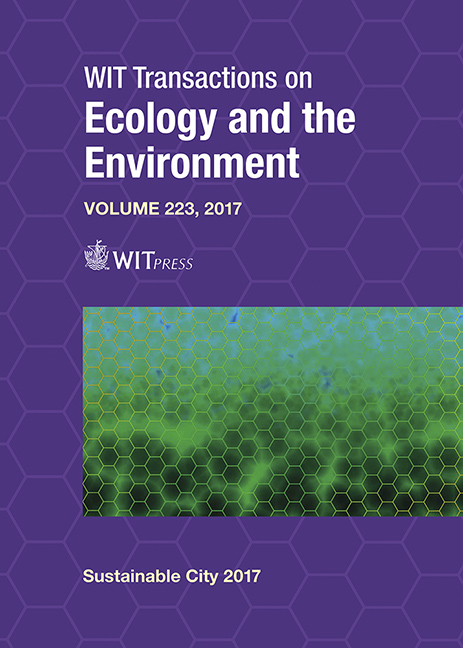QUALITY OF URBAN LIFE AND ITS RELATIONSHIP TO SPATIAL CONDITIONS
Price
Free (open access)
Transaction
Volume
223
Pages
12
Page Range
285 - 296
Published
2017
Size
26,262 kb
Paper DOI
10.2495/SC170251
Copyright
WIT Press
Author(s)
ANA L. ALVAREZ, DANIELA MÜLLER-EIE
Abstract
Based on a literature review on the concept of quality of life within sociology, psychology, human geography, as well as the environmental design fields, it becomes apparent that some factors are particularly relevant to environmental designers and urban planners. Places ranging in scale from the individual dwelling or local neighbourhood, to the city and region, and even the state or nation, influence people’s lives and, thus, their overall quality of life. In environmental design and urban planning, a fundamental assumption is that places have environmental attributes that can be designed to enhance the quality of individual lives. Investigating this assumption becomes increasingly important as urban areas and their populations grow. This study therefore explores definitions of quality of life, sustainable urban development and urban planning, in order to define the concept of quality of urban life more precisely. Elements of quality of life and quality of urban life are presented in a comparative model where five dimensions are explained in detail (physical, environmental and mobility, social, economic and political, psychological). Consequently, an indicator set, that combines objective indicators of the urban environment with subjective evaluations of individual behaviours and perceptions, is proposed. The study concludes with an evaluation model that serves as a basis for further investigation of the relationships between the urban environment and quality of urban life, as well as interrelations between the dimensions and corresponding indicators. Thus, the quality of urban life in specific neighbourhoods can be identified.
Keywords
quality of life, quality of urban life, spatial conditions, indicator development





